In her essay, “Against Interpretation,†Susan Sontag calls into question the stability of the ways in which the likes of history, art, and theory are understood. To interpret something, Sontag argues, is to comprehend it, and she posits that the process of interpretation typically spurs from a network of social myths and beliefs. “Interpretation is not (as most people assume) an absolute value,” Sontag states.
Interpretation must itself be evaluated, within a historical view of human consciousness.
For many artworks, even those that are born out of experimentation or spontaneity, to be interpreted is to be considered successful in some sense. But how would an artwork behave, look, and exist—and how should it be interpreted—when failure is the predominant driving force in its creation?
Failure in Progress, Zephyr Gallery’s latest exhibition featuring works by five regional artists, expands the conceptualization of failure and all its implications, specifically the presumption that failure is temporary or liminal and rarely a sought out conclusion. The exhibition, curated by Jessica Bennett Kincaid, stands as an opportunity to evaluate what it means for an artwork to succeed or not, and how failure can be utilized as an aspiration or primary component in making a work of art.
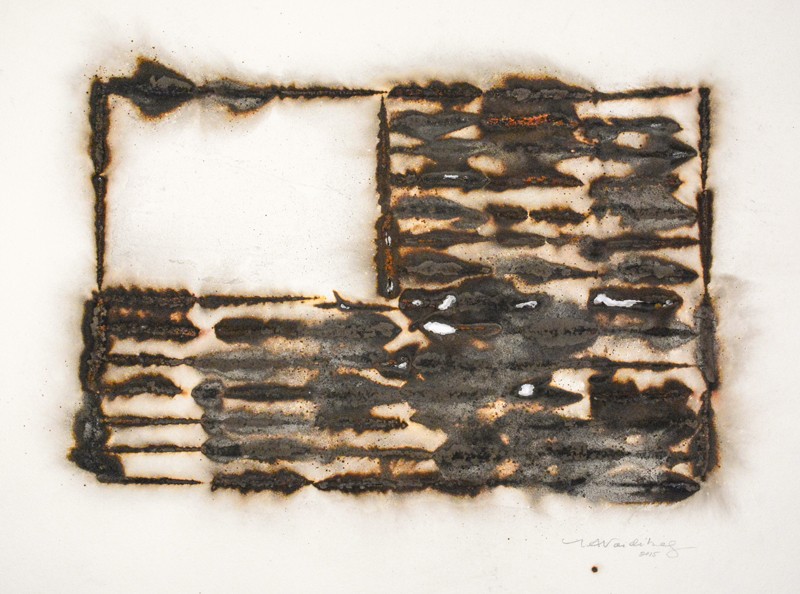
Allusions to failure are ubiquitous in Melissa Vandenberg’s Conflagrate (2015), a drawing—or perhaps more accurately, an imprint—of the American flag singed onto a piece of paper by sparklers. Some burns are so severe that holes in the paper have formed, or certain charred areas are so vast that the rigid contours of the flag’s stripes have vanished. Failure is prevalent through the use of materials: the act of burning something is inherently detrimental, and the drawing itself lacks many of the standards common in depictions of the flag such as color, geometric accuracy, and, most noticeable in Vandenberg’s work, stars. This particular rendition of one of America’s most striking emblems is filled with void. Additionally, the combination of iconography and material is charged with political and social connotations. Vandenberg submits a symbol of national unity in a destructive manner to imply that American stability is an illusion maintained by such images. Conflagrate, much like the conceit of Failure in Progress, suggests that deficiency is always present and, in some cases, inescapable.
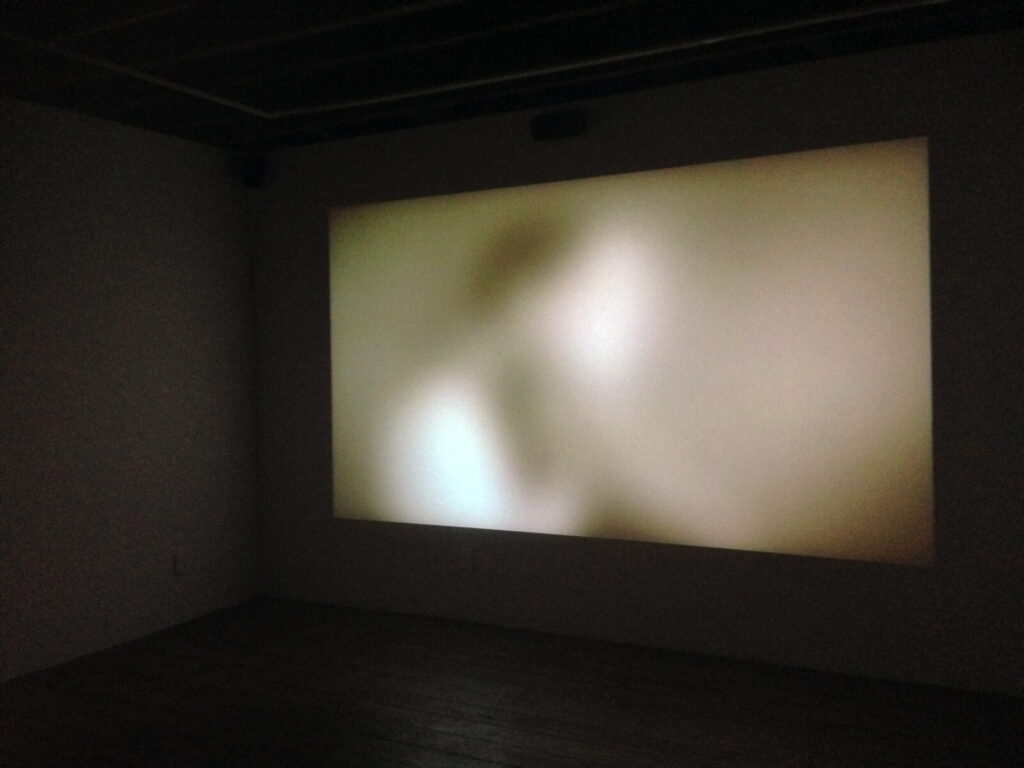
Deficiency is further explored in a black box on Zephyr’s upper-level, which projects Josh Azzarella’s Untitled #125 (Hickory) (2011), a video excerpt of the Wizard of Oz beginning when the tornado first enters the film and ending when Glinda the Good Witch greets Dorothy in Munchkinland. In Azzarella’s version, the segment has been extended to last five days, or 120 hours, inevitably blurring the clip due to limitations of technology. In developing the work, Azzarella layered his selection on top of itself multiple times, delaying the start time of each so that every frame is present at any given moment through the duration of the work, some more perceptible than others. The end result is a vague retelling of one of the film’s most pivotal scenes—Azzarella obscures familiar imagery to the point of illegibility.
It is the technological components of Untitled #125 that most pertinently incorporate notions of failure, but the references to failure permeate the content of the piece as well. For some, failure is an intermediary stage on the path to success. Similarly, the clip of Dorothy entering Oz is a fleeting yet crucial shift within the film’s narrative. Azzarella has completely fixated on this point, allowing the transitory moment to run on end, paralleling the thematic persistence of failure throughout the gallery.
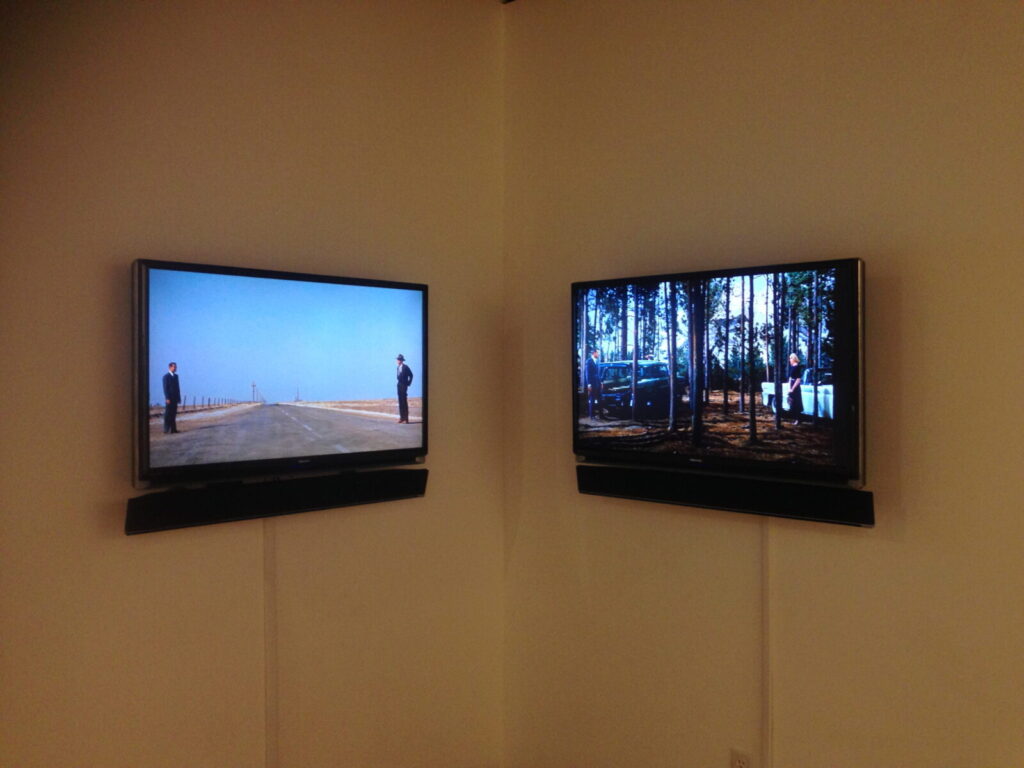
Like Untitled #125, Azzarella’s Untitled #142 (Bob Coe from Wasco) (2013), a two channel video work playing edited loops from Alfred Hitchcock’s North by Northwest, centers on the moments surrounding the main action. Both screens in Untitled #142 display two characters from the film facing each other, standing with their backs near the edges of the screens. The characters bustle in place but their feet never move, effectively halting Hitchcock’s plot. Azzarella’s works in Failure in Progress compliment others well, including Vandenberg’s Conflagrate, which shed light on the ways in which fragments of popular culture are capable of holding divergent, conflicting meanings.
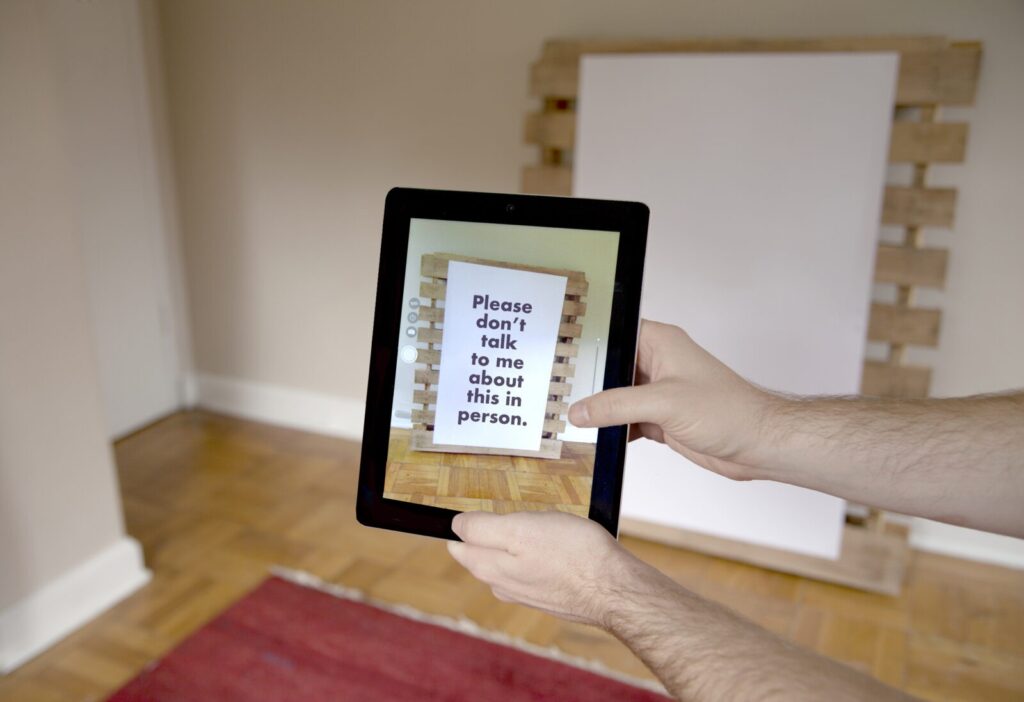
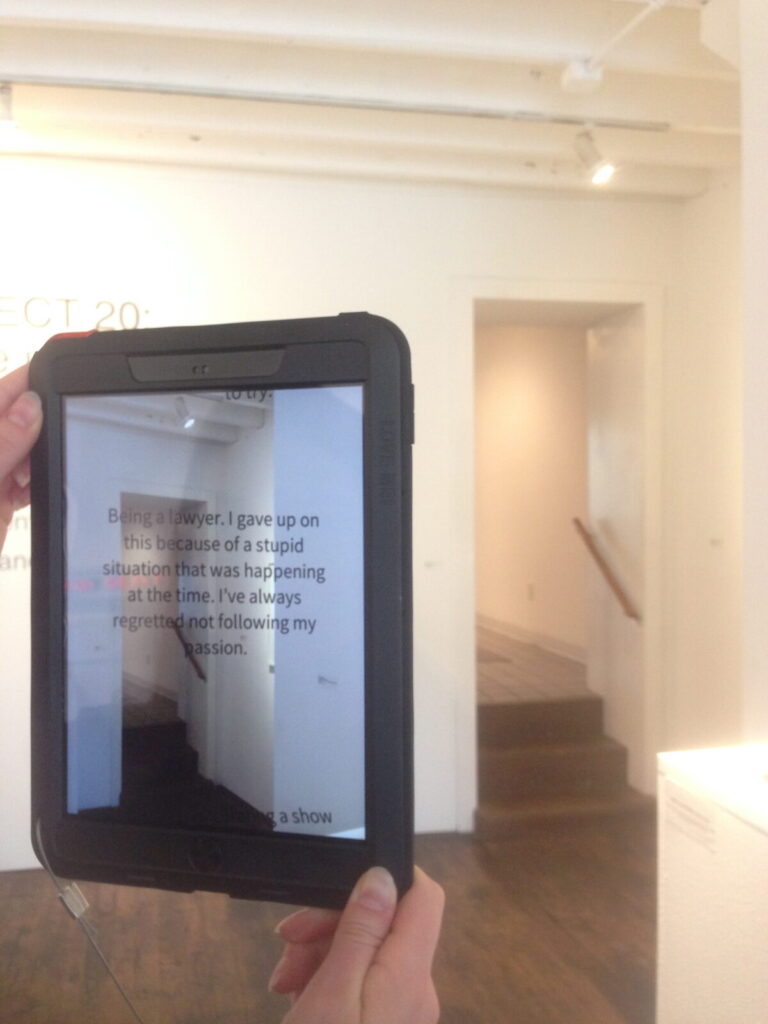
Collective memory is again at the fore in Almost Something (2017), an interactive virtual work by Alex Serpentini that activates when visitors maneuver an iPad to face various directions in the gallery space. Serpentini creates a program that projects disclosures of personal failures on the walls of Zephyr, depending on where the holder of the iPad chooses to move it. The admissions are frequently striking, and invoke experiences with college courses, romantic pursuits, and rugby teams that reveal insecurities and loss. Discontent is ever-present in Almost Something, which is at once the most aesthetically minimal and arguably the most powerful work in the exhibition due to the straightforward presentation and nature of its subject matter.
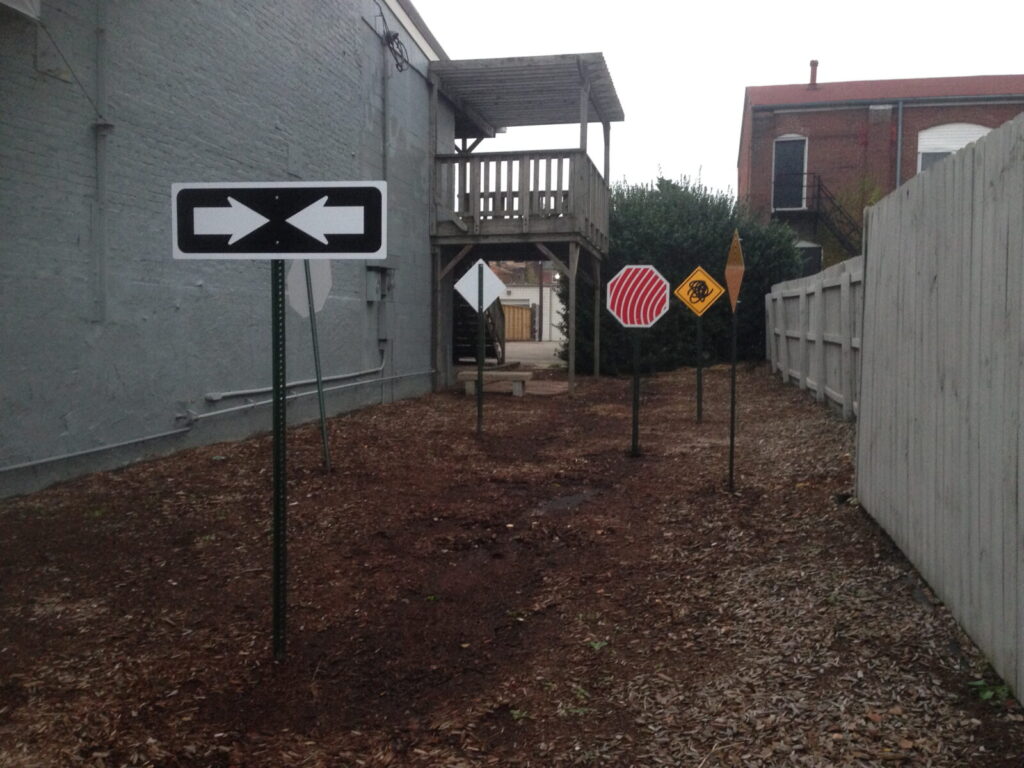
Outside in Zephyr’s courtyard, Gautam Rao’s Everything Happens for a Reason (2017) is amongst the most playful works in the exhibition. Rao offers what seem to be six regulation road signs: the shapes, aluminum, and colors deceptively operate as everyday warnings to stop, merge, or the like. But it quickly becomes apparent that Rao’s diamonds and octagons are instead covered with twisted lines or contradictory arrows that would prove unhelpful for drivers. Everything Happens for a Reason, as its name suggests, simulates the threshold dividing success and failure—these signs represent those endeavors that fall short of routine objectives. What’s more, Rao’s outdoor sculptures test our perception in a manner similar to the artist’s Sorting Cube Revised (2017), a modified version of a children’s learning toy that requires trial and error to complete.
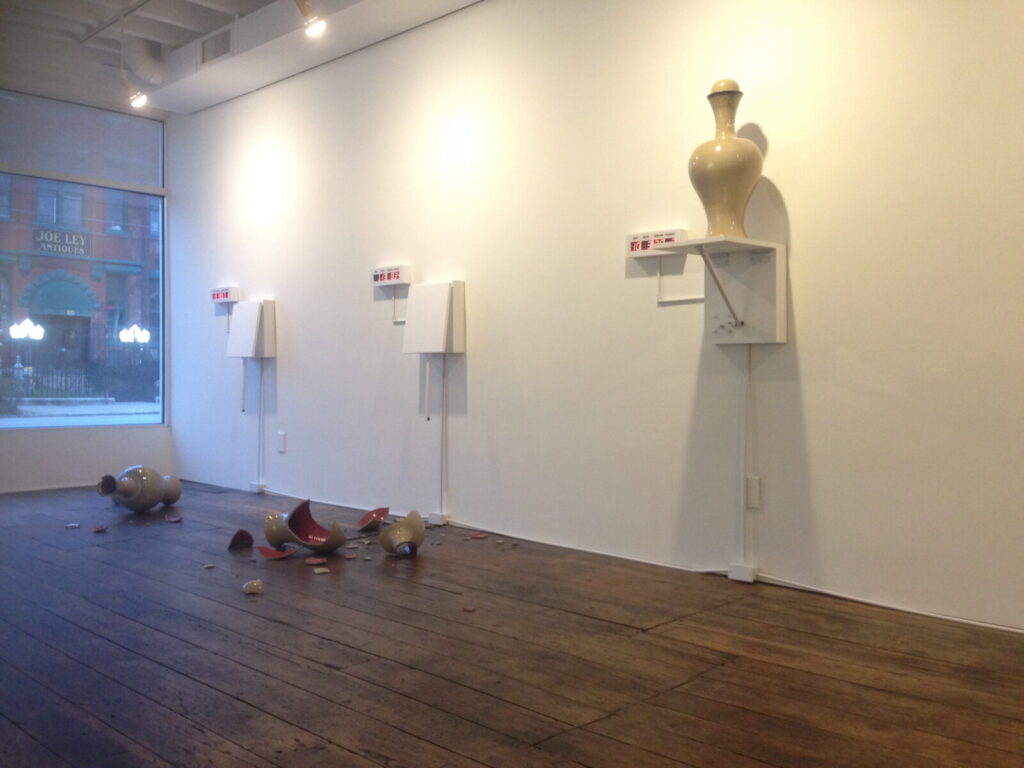
There are many compelling reasons to view this particular exhibit on numerous occasions, not least of which is Andrew Cozzens’s End Game (2017), a series of six platforms lining the gallery’s widest wall, each holding a ceramic vase. Every platform is connected to a timer that, upon counting down to show all zeroes, triggers a lever, collapsing the platform so the vase plummets to the floor to crash and shatter with disorder. The timers are set in intervals that equally divide the exhibition’s duration into sixths.
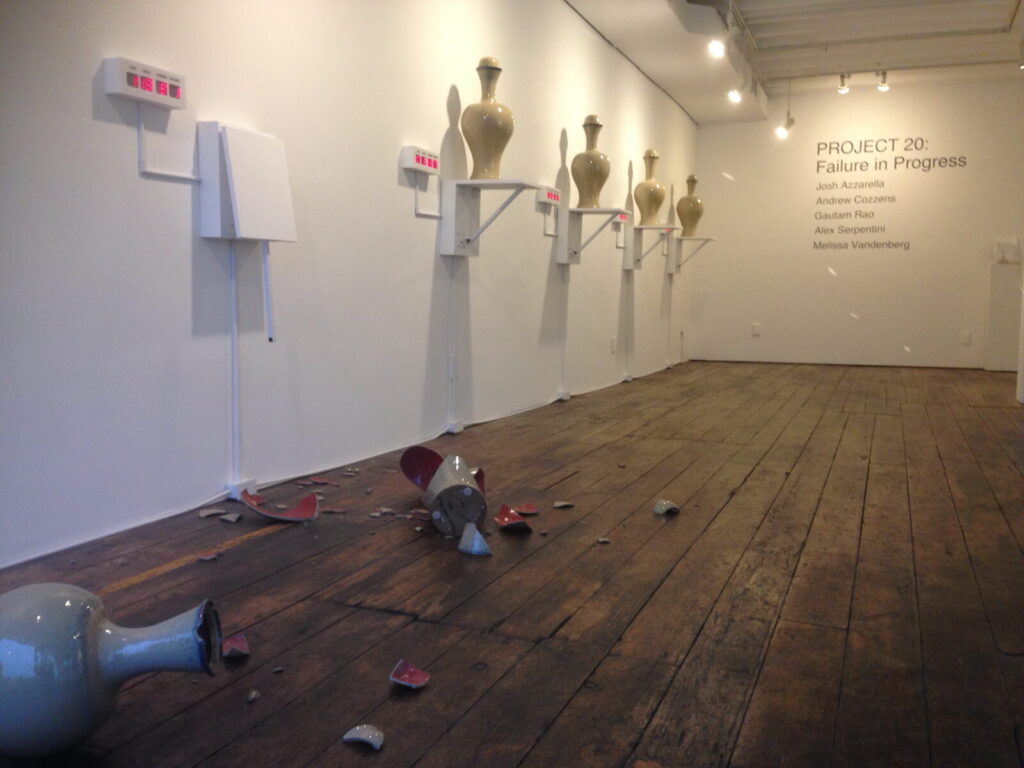
![]() Cozzens, fatally, demonstrates the ways in which interpretation is, in some cases, dependent on the notion of time. As for End Game, failure is both unavoidable and the goal. Success and failure are achieved by the same outcome. Indeed, Failure in Progress, with an exceptional array of artworks that contemplate insufficiency in varied manners, asks visitors to rethink their learned modes of interpretation. Failure is hardly a desirable feat, but the five artists currently showing at Zephyr have discovered methods of pursuing, facing, and adapting to setbacks with success.
Cozzens, fatally, demonstrates the ways in which interpretation is, in some cases, dependent on the notion of time. As for End Game, failure is both unavoidable and the goal. Success and failure are achieved by the same outcome. Indeed, Failure in Progress, with an exceptional array of artworks that contemplate insufficiency in varied manners, asks visitors to rethink their learned modes of interpretation. Failure is hardly a desirable feat, but the five artists currently showing at Zephyr have discovered methods of pursuing, facing, and adapting to setbacks with success.
Failure in Progress is on view at Zephyr Gallery in Louisville, KY until December 30th 2017.




